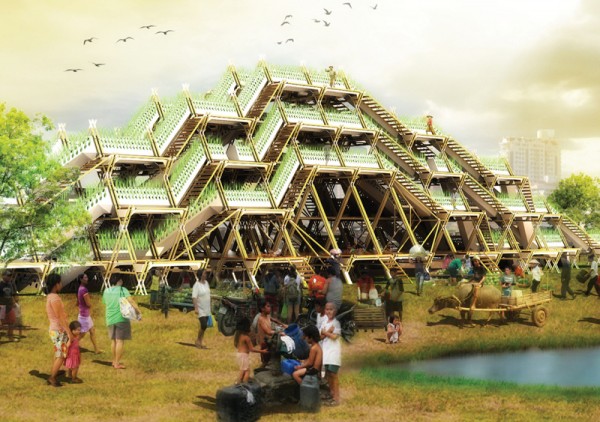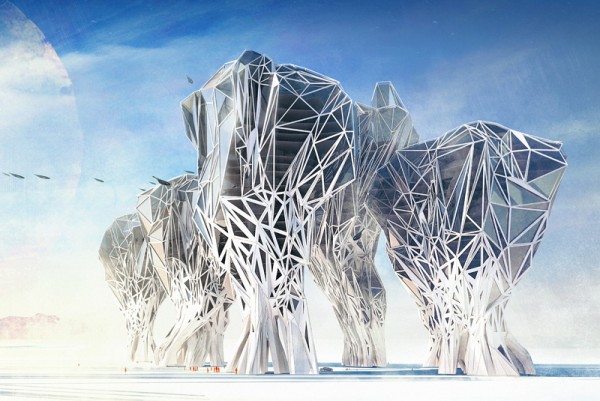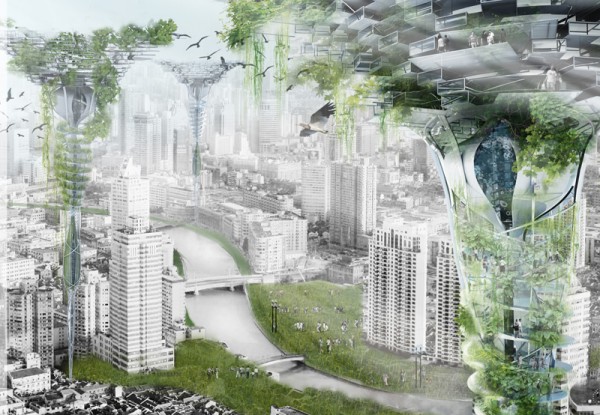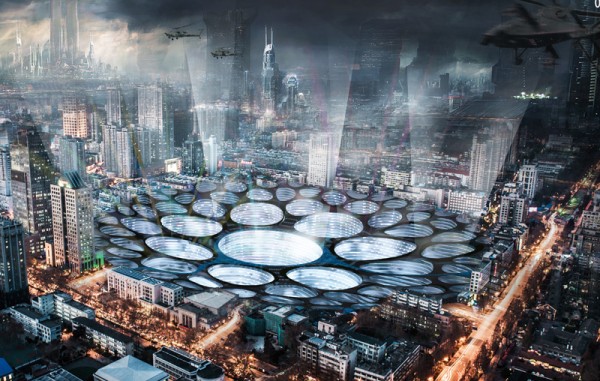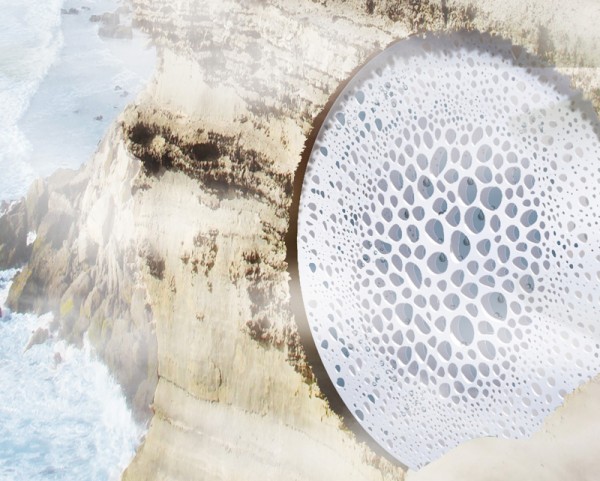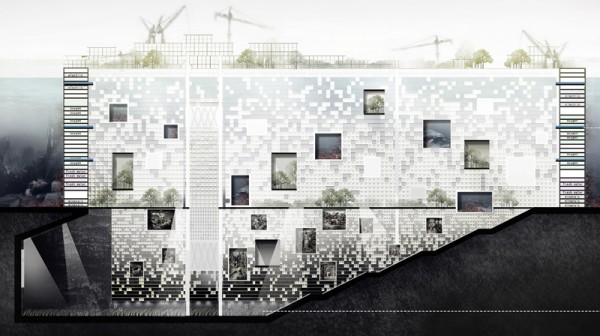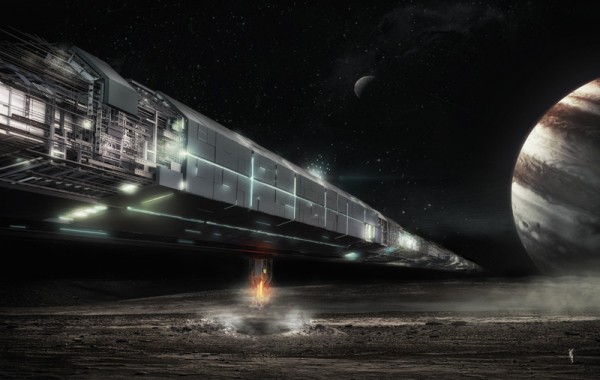Honorable Mention
2013 Skyscraper Competition
Jin Ho Kim
United Kingdom
Nowadays approximately 3 billion people rely on rice as their major source of food. It is expected that the rice demand will continue to accelerate and by 2025 more than 4 billion people will rely on it. As a consequence local governments in East Asia have established a total control on rice fields and production. This has been a disastrous event for the local farmers and has left the price of rice in absolute control of a handful of people. It is also expected that the price of rice will gradually increase to a point in which the majority of the Asian population will not be able to afford it.
This project proposes the creation of decentralized aeroponic vertical farmlands that will be able to provide enough rice for future generations. The basic structure consists of an array of bamboo parallelograms that create stepping terraces of rice fields. It counts with a natural irrigation system where gradually flows down with gravity through a network of irrigation paths. Read the rest of this entry »

